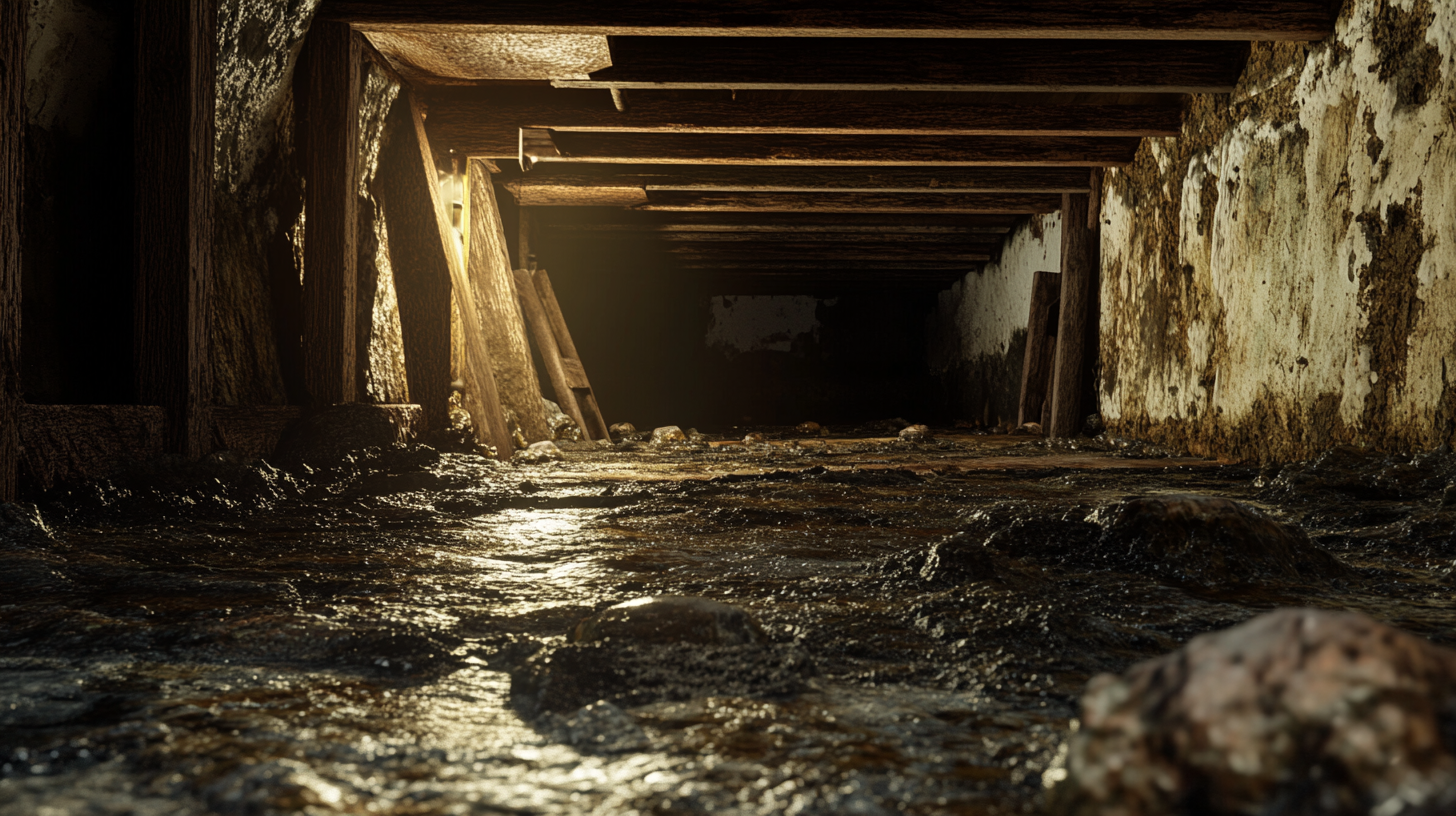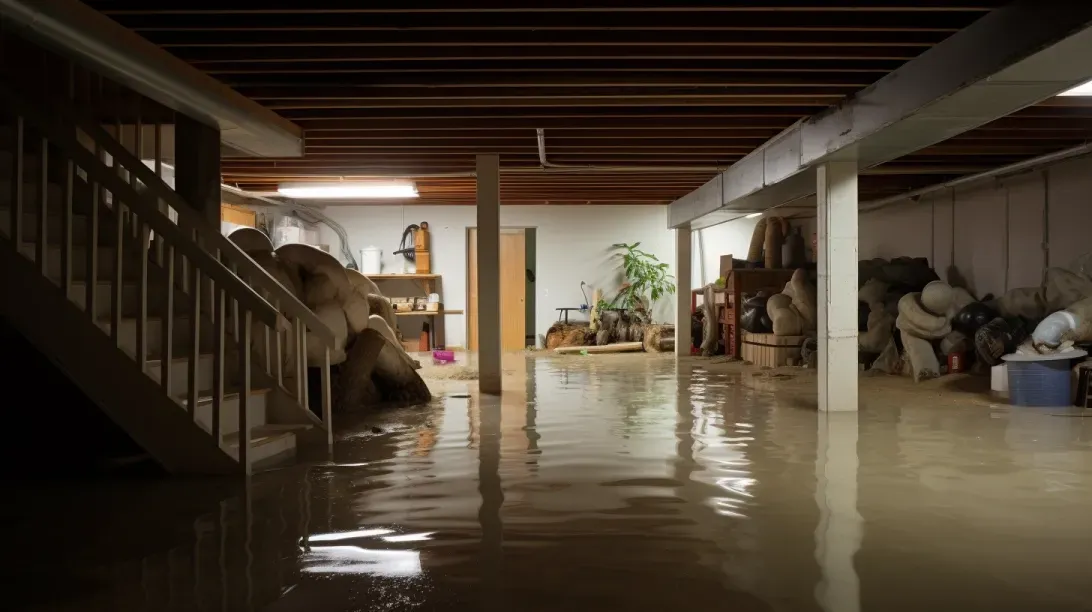Now IS THe Time To...

Crawl Space Services In Knoxville, TN
Stetson Howard: 865-432-6743
CRAWL SPACE ENCAPSULATION, REPAIR, WATERPROOFING & MOLD REMOVAL
No-Obligation, Free Inspections
No-Obligation Free Estimates
We Warranty All of Our Work
100% Satisfaction Guaranteed
Welcome to our insightful exploration of interior waterproofing, a critical aspect of maintaining the integrity and safety of your home. Interior waterproofing is not just a preventative measure; it's a fundamental component of responsible homeownership. It involves techniques and strategies to prevent water from penetrating and damaging the interior spaces of your home, such as basements, crawl spaces, and walls. Effective waterproofing safeguards against structural damage, prevents health hazards like mold and mildew, and preserves the overall value of your property.
In this guide, we shift our focus to DIY methods of interior waterproofing. While professional installation is often recommended for comprehensive waterproofing solutions, there are numerous scenarios where DIY approaches are not only feasible but also highly effective. These methods offer homeowners a practical and cost-effective way to protect their homes from the common yet potentially devastating issue of water damage.
We delve into the world of DIY interior waterproofing, providing you with the knowledge and tools needed to tackle this task confidently. From understanding the basics of waterproofing materials and techniques to step-by-step guides on applying these methods, this guide is designed to empower you, the homeowner, with the ability to take proactive steps in protecting your home. Whether you're dealing with minor dampness issues or looking to reinforce your home's defense against moisture, our focus on DIY methods will equip you with the essential skills and understanding needed for effective interior waterproofing.
Understanding Interior Waterproofing
Interior waterproofing is a crucial aspect of home maintenance, ensuring the integrity and safety of your living space. This section will provide a comprehensive understanding of what interior waterproofing entails and its importance, as well as guide you in identifying when DIY methods are appropriate.
What is Interior Waterproofing?
Definition and Basic Principles:
Interior waterproofing refers to the methods and processes used to prevent water and moisture from penetrating and damaging the interior spaces of a building. This includes the application of sealants, coatings, and other waterproofing materials to walls, floors, and other areas prone to moisture. The basic principle of interior waterproofing is to create a barrier that repels water and controls humidity levels within the building.
Importance for Home Maintenance:
Effective interior waterproofing is vital for maintaining the structural integrity of your home. It prevents issues like mold growth, wood rot, and deterioration of building materials, which can lead to costly repairs and health hazards. Additionally, waterproofing your home's interior contributes to a comfortable and safe living environment by keeping spaces dry and free from dampness.
When to Consider DIY Waterproofing
Identifying Situations Suitable for DIY:
DIY waterproofing can be suitable for minor projects and maintenance tasks. This includes applying waterproof sealants around windows and doors, treating small areas of dampness on walls, or painting basements with waterproofing paint. DIY is appropriate when the scope of the problem is small, the area is easily accessible, and you have the necessary tools and skills.
Limitations of DIY Methods:
While DIY waterproofing can be effective for minor issues, it has its limitations. Complex waterproofing projects, such as dealing with significant water intrusion, structural repairs, or installing comprehensive waterproofing systems, typically require professional expertise. DIY methods might not provide a long-term solution for severe problems and could potentially lead to more significant issues if not done correctly. It's important to assess the extent of the problem and your capabilities realistically before deciding to undertake a waterproofing project on your own.
Preparing for DIY Waterproofing
Embarking on a DIY waterproofing project requires not only the right tools and materials but also a thorough understanding of your space's specific needs. This section will guide you through the process of assessing your interior space for waterproofing requirements and provide a comprehensive list of the necessary tools and materials, along with tips for selecting high-quality products.
Assessing Your Space
How to Inspect Your Interior Space for Waterproofing Needs:
To effectively waterproof your home, start with a detailed inspection:
- Look for Visible Signs Check for water stains, peeling paint, mold growth, or a musty odor, especially in basements, bathrooms, and near plumbing fixtures.
- Identify Problem Areas Common areas that often require waterproofing include basements, cellars, bathrooms, and areas adjacent to exterior walls.
Identifying Common Problem Areas:
Understanding where to focus your waterproofing efforts is crucial:
- Basements and Cellars These areas are particularly prone to moisture due to their below-ground location.
- Bathrooms and Kitchens Regular water use in these areas can lead to moisture accumulation.
- Windows and Exterior Walls These can be entry points for water, especially if not properly sealed.
Tools and Materials Needed
Comprehensive List of Required Tools and Materials:
For a successful DIY waterproofing project, you'll need:
- Waterproofing Sealant or Coating Choose a product suitable for the area you're waterproofing, such as epoxy or polyurethane for basements.
- Application Tools This includes brushes, rollers, and a caulking gun for sealants.
- Protective Gear Safety goggles, gloves, and masks are essential for your protection.
- Surface Preparation Supplies Ensure you have cleaners and possibly a patching compound for prepping surfaces.
Tips for Selecting Quality Products:
Selecting the right products is key to effective waterproofing:
- Research and Reviews Look up product reviews and seek recommendations from professionals or experienced DIYers.
- Product Specifications Ensure the product is appropriate for the specific conditions of your space, such as moisture levels and material compatibility.
- Safety and Environmental Considerations Opt for products with lower toxicity levels to ensure safety during application.
Step-by-Step DIY Waterproofing Process
DIY waterproofing can be a rewarding project that enhances the longevity and safety of your home. This section will guide you through a step-by-step process, from preparing the area to applying sealants and installing basic interior drainage systems, ensuring you have the knowledge to effectively waterproof your space.
Cleaning and Preparing the Area
Instructions for Cleaning and Prepping Walls and Floors:
- Remove Debris and Loose MaterialStart by clearing the area of any furniture or obstacles. Then, remove any loose paint, plaster, or debris from the walls and floors.
- Clean the SurfaceUse a mild detergent and water to clean the surfaces thoroughly. For tougher stains or mold, consider using a specialized cleaning solution.
- Repair Cracks and HolesFill in any cracks or holes with a suitable patching compound. Ensure these repairs are fully dried before proceeding.
Importance of a Dry and Clean Surface:
A dry and clean surface is crucial for effective waterproofing. Moisture or dirt can prevent the waterproofing materials from adhering properly, reducing their effectiveness and longevity. Ensure the area is completely dry and free of dust or grease before applying any waterproofing materials.
Applying Sealants
Detailed Steps for Applying Different Types of Sealants:
- Choose the Right SealantSelect a sealant appropriate for the area and conditions, such as epoxy or polyurethane.
- Apply the SealantUsing a brush, roller, or caulking gun, apply the sealant evenly across the surface. Follow the manufacturer's instructions regarding application thickness and number of coats.
- Smooth Out the SealantUse a trowel or similar tool to smooth out the sealant, ensuring an even coverage without gaps or bubbles.
Tips for Ensuring Even Coverage:
- Work in SectionsTackle small sections at a time to maintain control over the application.
- Maintain a Wet EdgeOverlap each stroke slightly to avoid lines or gaps in the coverage.
- Check for Missed SpotsAfter application, inspect the area for any missed spots or thin coverage and reapply as necessary.
Safety and Effectiveness Considerations:
- Follow Local Building CodesEnsure any drainage solutions comply with local building codes and regulations.
- Consider Professional HelpFor more complex systems like sump pumps, consider hiring a professional to ensure proper installation and effectiveness.
- Regular MaintenanceMaintain your drainage systems regularly to ensure they remain effective in diverting water away from your home.
Common DIY Waterproofing Techniques
DIY waterproofing techniques can be effective solutions for addressing minor water intrusion issues in your home. This section will guide you through some common methods, focusing on crack injection repair and the use of waterproofing paints and coatings, providing detailed instructions and insights into their advantages and limitations.
Crack Injection Repair
How to Identify and Repair Cracks:
- Identifying Cracks Inspect your home's foundation, walls, and floors for any visible cracks. Pay special attention to areas where water or moisture is commonly present.
- Cleaning the Crack Before repairing, clean the crack thoroughly to remove any loose material, dust, or debris.
- Choosing the Right Filler For concrete cracks, epoxy or polyurethane injections are commonly used. Epoxy is ideal for structural repairs, while polyurethane is more suited for sealing against water.
Materials and Methods for Effective Crack Filling:
- Epoxy Injection Epoxy provides a strong, rigid repair and is best for cracks that need structural reinforcement.
- Polyurethane Injection Polyurethane expands upon contact with water, effectively sealing even hairline cracks against water ingress.
- Application Use a caulking gun or injection kit to apply the material into the crack, starting from the bottom and working your way up. Ensure the crack is completely filled and the material is evenly distributed.
Waterproofing Paints and Coatings
Types of Waterproofing Paints and How to Apply Them:
- Types of Paints Common types include acrylic, latex, and epoxy-based waterproofing paints. Each type has specific properties suited for different surfaces and conditions.
- Surface Preparation Properly clean and dry the surface before application. Remove any existing paint, mold, or mildew, and repair cracks or holes.
- Application Apply the paint using a brush, roller, or sprayer, following the manufacturer's instructions. Multiple coats may be required for optimal effectiveness.
Pros and Cons of Waterproofing Paints:
Pros:
- Relatively easy to apply and widely available.
- Can be cost-effective for minor dampness issues.
- Offers a range of options suitable for different surfaces and conditions.
Cons:
- Not suitable for addressing major water intrusion issues.
- May require reapplication over time.
- Effectiveness can be limited by improper application or surface preparation.
Tips for Successful DIY Waterproofing
Embarking on a DIY waterproofing project requires careful planning, execution, and an awareness of safety. This section will provide you with essential best practices and safety precautions to ensure your waterproofing efforts are effective and safe.
Best Practices
Key Tips and Tricks for Effective Waterproofing:
- Thorough Inspection Before starting, conduct a detailed inspection of the area to identify all potential sources of water ingress.
- Proper Surface Preparation Clean and repair surfaces thoroughly before applying any waterproofing materials. This ensures better adhesion and effectiveness.
- Choosing the Right Materials Select waterproofing materials that are suitable for the specific conditions and area you are working on.
- Even Application Apply materials evenly and according to the manufacturer’s instructions. Avoid shortcuts and ensure complete coverage.
- Layering When applying coatings or sealants, apply multiple thin layers rather than one thick layer for more uniform and durable coverage.
- Testing After the application, test the waterproofed area with a small amount of water to ensure there are no leaks.
Common Mistakes to Avoid:
- Ignoring Manufacturer’s Instructions Always follow the guidelines provided by the manufacturer for the best results.
- Poor Timing Avoid waterproofing during wet or extremely cold conditions, as this can affect the curing process.
- Inadequate Drying Time Allow each layer to dry completely before applying the next one.
- Overlooking Small Cracks Even minor cracks can lead to water ingress and should be addressed.
Safety Precautions
Safety Advice for Handling Materials and Tools:
- Wear Protective Gear Always wear gloves, goggles, and masks, especially when handling chemical sealants or when sanding surfaces.
- Read Safety Data Sheets Familiarize yourself with the safety data sheets for all materials used, which provide information on handling, risks, and first-aid measures.
Importance of Proper Ventilation:
- Ventilate the Area Ensure good ventilation in the area where you are working, particularly when using products that emit fumes.
- Use Fans and Open Windows Use fans and open windows to circulate air and reduce the concentration of airborne contaminants.
- Take Breaks If you feel dizzy or lightheaded, take a break and get fresh air immediately.
As we conclude our exploration of DIY interior waterproofing, it's important to reiterate the significance of this task in maintaining the health and integrity of your home. Waterproofing your interior spaces is not just a measure to enhance the durability of your property; it's a proactive step towards ensuring a safe and comfortable living environment. By effectively waterproofing areas prone to moisture, you protect your home against potential structural damages, prevent the growth of mold and mildew, and safeguard the overall value of your property.
Encouragement for Ongoing Maintenance and Vigilance
While the initial application of waterproofing measures is crucial, the journey doesn't end there. Ongoing maintenance and vigilance are key to ensuring the long-term effectiveness of your waterproofing efforts. Regularly inspect your home for any signs of moisture, such as damp spots, peeling paint, or a musty smell, especially after heavy rains or in known problem areas.
Address any issues promptly to prevent them from escalating into more significant problems.
Remember, the environment around your home can change over time, which might necessitate additional waterproofing measures or adjustments to existing ones. Stay informed about the best practices in home maintenance and be prepared to update your waterproofing strategies as needed.
We encourage you to embrace the role of a proactive homeowner. Your efforts in DIY waterproofing and regular maintenance not only contribute to the longevity of your home but also provide peace of mind knowing that your living space remains secure and well-protected against the challenges posed by water and moisture.
FAQs
Recent Blog Posts
Crawl Space News







